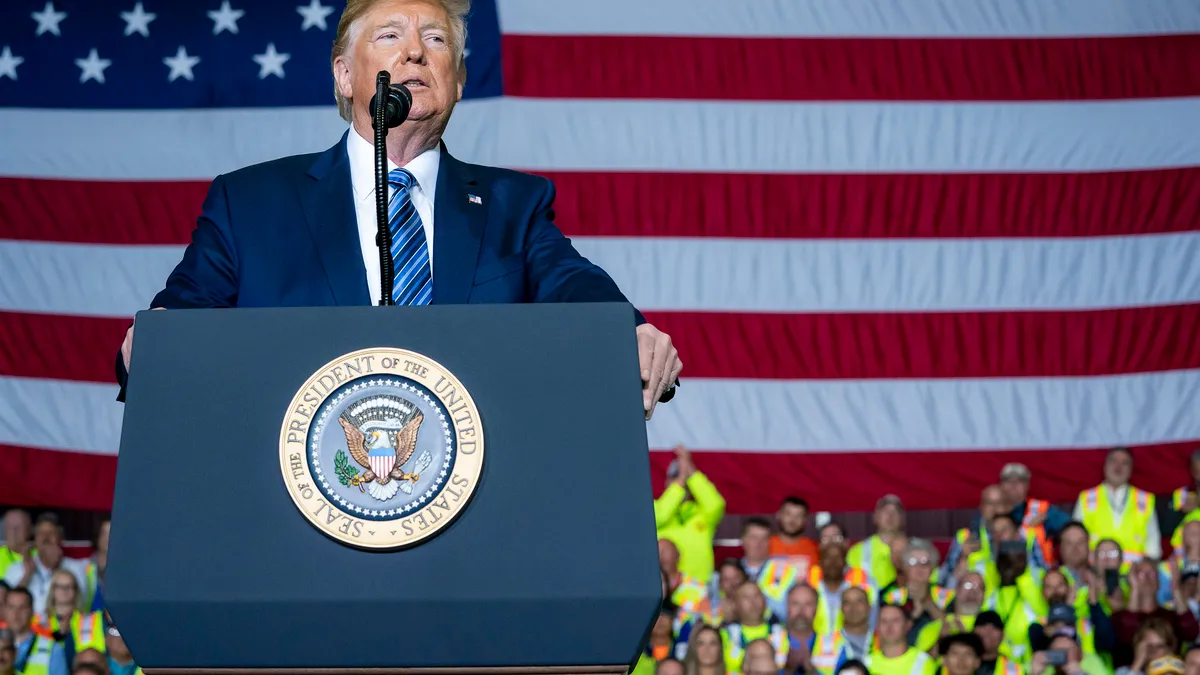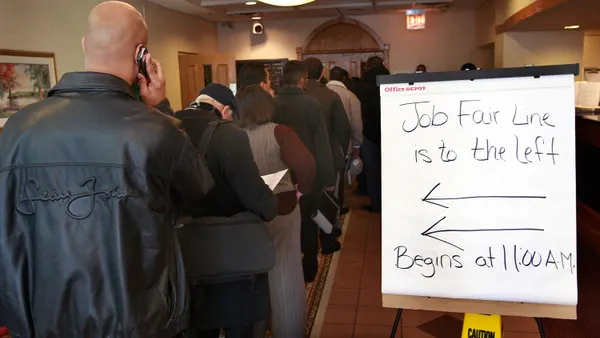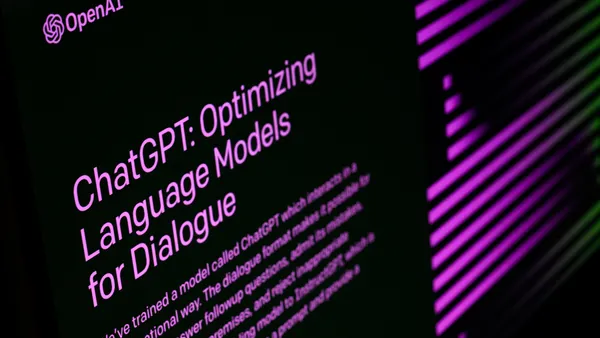Dive Brief:
- The U.S. Department of Labor (DOL) announced Jan. 12 — for the second time — a final rule regarding required wages for certain immigrant workers, most notably those on H-1B visas. The rule will begin to phase in July 1, 2021.
- DOL adjusted the wage tier system after receiving comments from employers worried that the pay bands outlined in an October interim final rule were "arbitrary and unsustainable," according to the most recent rule. The lowest tier would be paid at the 35th percentile of prevailing wage while the highest tier would be paid at the 90th percentile; these are adjustments downward from the interim rule but up from the original regulations.
- The new rule also outlines two separate phase-in periods for gradual wage adjustment. The first wage period applies to all new job opportunities and will run from July 1, 2021, to July 1, 2022; in 2021, "the entry-level wage will increase from roughly the 17th percentile to 90% of the 35th percentile wage, as provided by BLS," the rule said. The second period — July 1, 2021, to July 1, 2024 — applies only to job opportunities where an employer will fill a job with a foreign worker eligible for extension of their H-1B status or on track to achieve permanent resident status, a senior DOL official said during a press call.
Dive Insight:
A federal district court struck down interim rules from both DOL and the U.S. Department of Homeland Security (DHS) in December, saying the agencies had forgone typical rulemaking procedures, including a comment period. DHS released its updated rule Jan. 8, replacing the lottery selection system for H-1B visas with one based upon a "wage level ranking" system that will prioritize foreign workers who have received the highest wage offers from employers. DOL's rule outlines required wages for said workers.
The lawsuits were originally filed by a group including the U.S. Chamber of Commerce as well as multiple trade groups and universities. As to whether the changes would appease concerned employers, responses from experts were mixed.
"Most employers that we deal with do not feel that these regulations address the concerns that the injunctive relief initiated," Jorge Lopez, shareholder and chair of the global mobility and immigration practice group at Littler, told HR Dive in an email. "The issue regarding the regulations only addresses the symptoms, not the actual problem. The actual problem is a supply problem as in we do not produce enough specialized skilled STEM degreed individuals."
DOL noted in the rule that "immediate changes to the wage levels are likely to be less disruptive than immediate increases in the minimum wage." The prevailing wage levels also may "already be in line with current wages" for sponsored employees, Richard Burke, CEO of Envoy Global, said in emailed comment, and other companies signaled in a recent Envoy report that they would be willing to raise wages to meet the new standards.
"That said, 40% of employers responded that the increased salaries would lead them to sponsor fewer foreign nationals for roles at their organization and 46% noted they would instead either move those job positions overseas, outsource them, or eliminate them altogether," Burke added.
The incoming Biden administration may put a stopgap measure in place to control implementation of these regulations, Lopez said. "There is precedence for 'midnight' regulations to be put on hold by an incoming administration. I will be shocked if that's not the same case here."
While the pandemic has rattled the U.S. jobs market, employers are still in need of high-skilled talent, of which immigrant workers serve as a key source.
"Overall, in 2021 employers are in favor of reform to the U.S. immigration system as foreign national talent is critical to competitiveness and hopeful for more streamlined processes under a new administration," Burke said.












